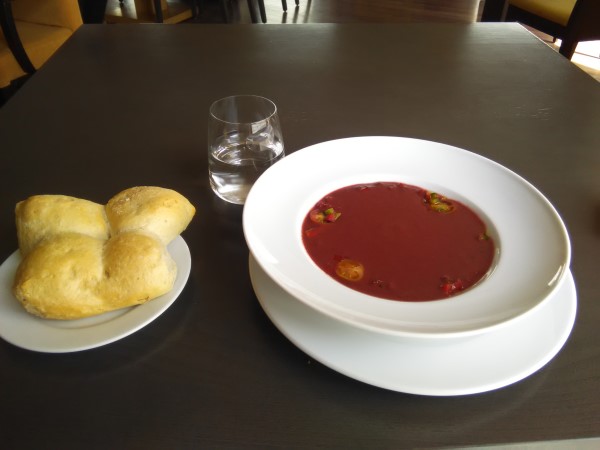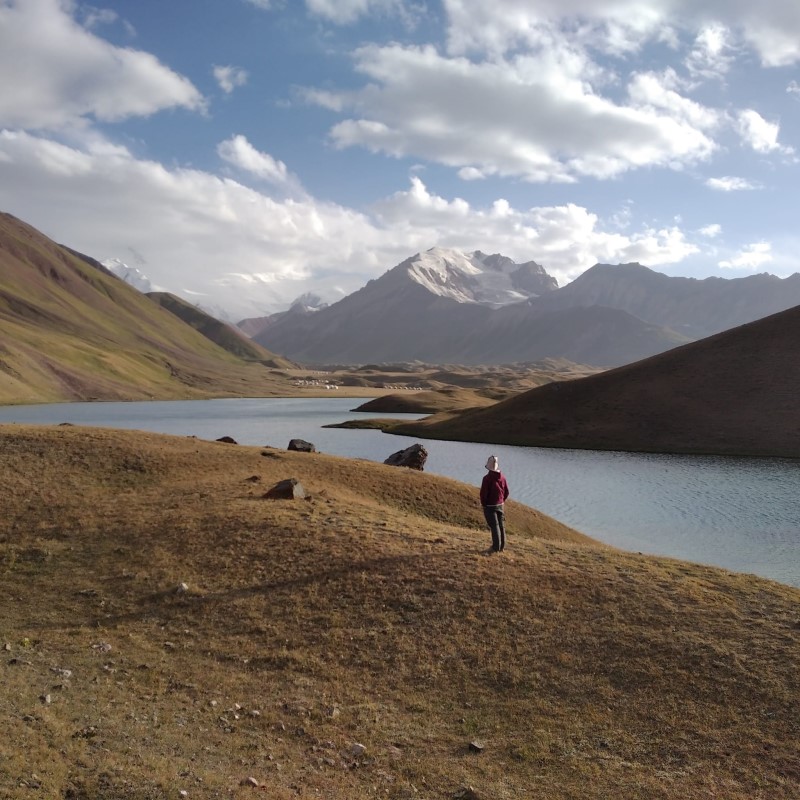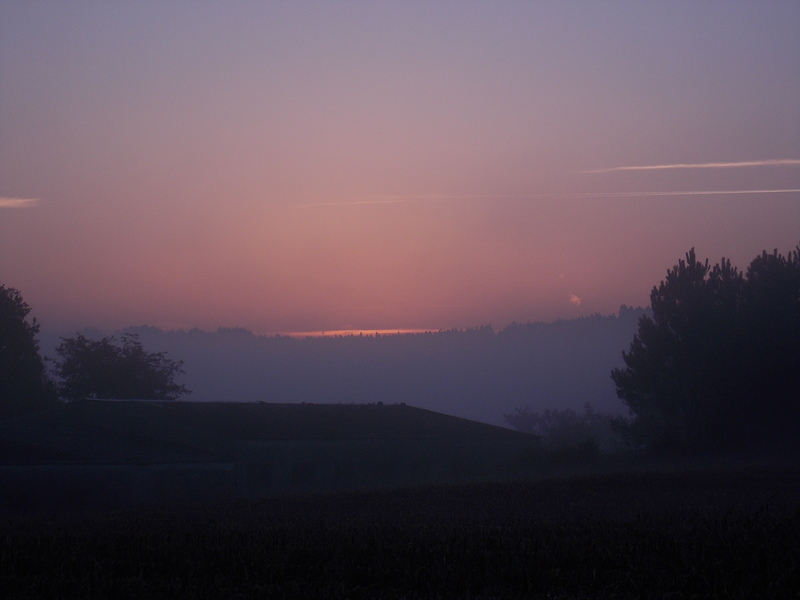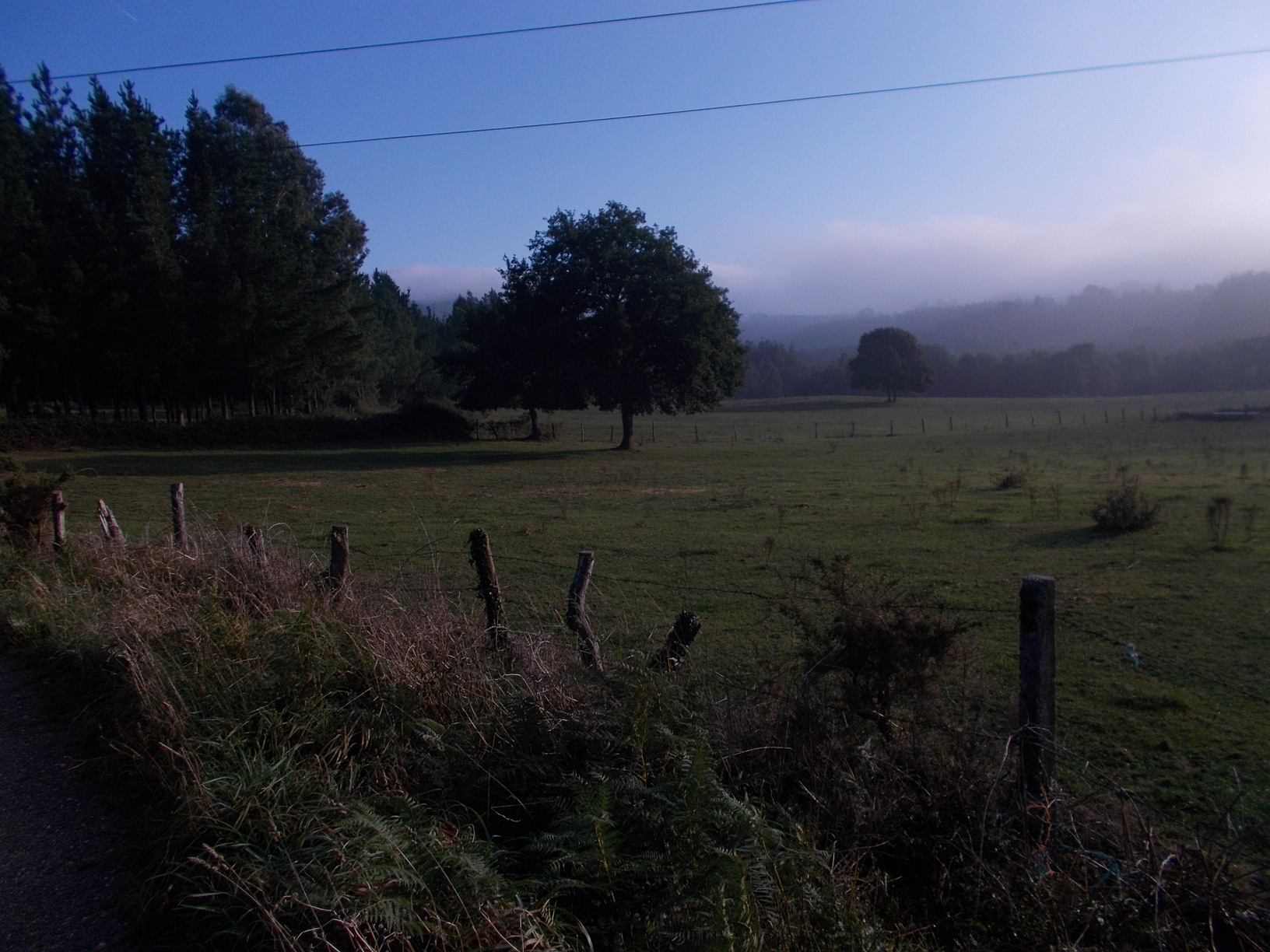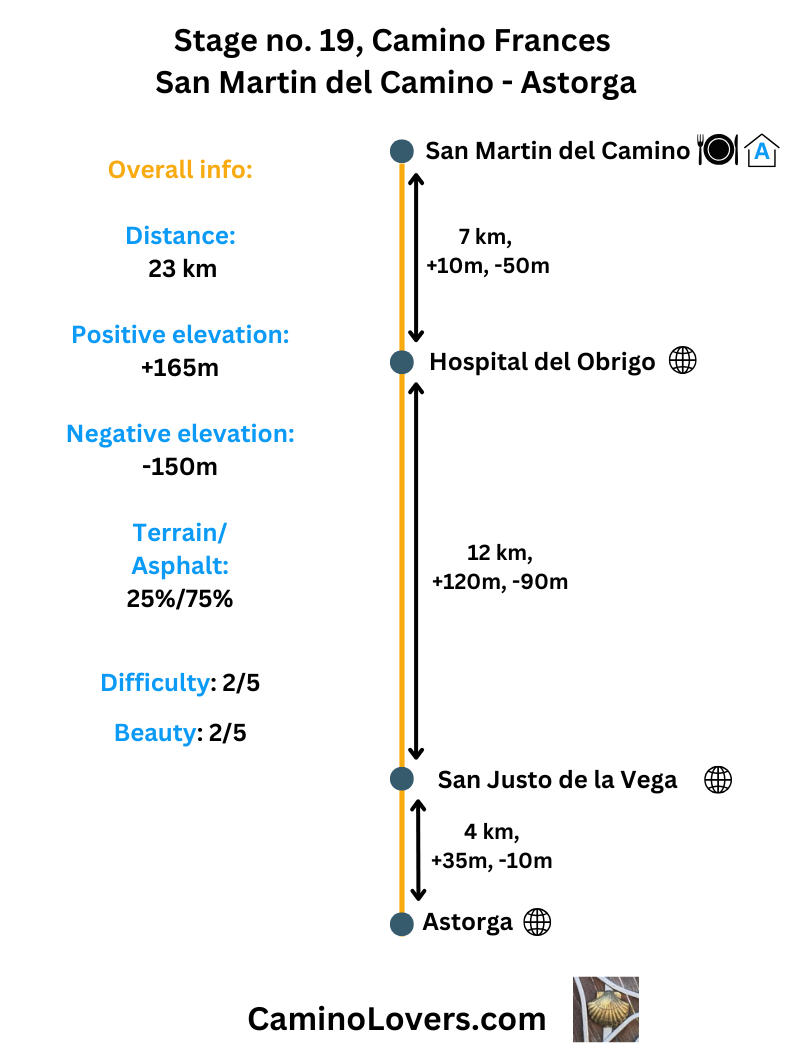
Basic Information
- Starting Point: San Martin del Camino, Spain – With roughly 300 inhabitants, you will find in the village five pilgrim albergues. The place lives from two things only: agriculture (more difficult each year due to climate change and other issues), and Camino Frances (better each year, sure enough new places for pilgrims will open soon, such as a small supermarket for example).
- Ending Point: Astorga, Spain – A historic crossroads town with Roman roots, a Gaudi-designed bishop’s palace, and famous chocolate traditions. With roughly 11,000 inhabitants, you’ll find four pilgrim albergues in town, plenty of other, more expensive accommodation options, and all services. The town center is beautiful and attracts a lot of tourism in summer as well.
- Alternative Route Available: Yes, between Hospital de Orbigo and San Justo de la Vega, you can take an alternative route leaving the busy N-120 road behind, and walking over calmer paths and slightly nicer scenery. Some camino guides (both online and offline) consider this variant nowadays the official camino, and in my opinion it is a route worth taking.
- Distance:
- Online Map: Official camino: map. Alternative route: map.
- Elevation Difference:
- Official camino: +180 m ascent, -180 m descent.
- Alternative route: +240 m ascent, – 240 m descent.
- Difficulty Score: 2/5.
- Beauty Score: 2/5.
- Terrain/Asphalt Walking Ratio: Official camino: 25% trail/75% asphalt, on on the road, or right next to the road. Alternative route: 35% trail/65% asphalt.
- Next stage: Camino Frances Stage no. 20, Astorga – Foncebadon.
- Previous stage: Camino Frances Stage no. 18, Leon – San Martin del Camino.
Elevation profile for the routes

– Official camino, another super-flat stage, but at least the descent to San Justo de Vega (km 18) offers some variety, and in a short section a climb gradient of 10% reminds us that the mountains are just one stage ahead…

– Alternative route is a bit more interesting (in the middle section, the one which differs from the official camino), but do not expect any serious climbs yet. Luckily things will change from tomorrow, and quite dramatically :).
Advanced Info About the Stage
- Trail Marking: Excellent marking throughout, including the clear indication of the alternative route. Once you’re already in Astorga, a branch of Via de la Plata (Camino starting in Seville) merges with Camino Frances. Especially in May and early June, quite a few pilgrims may come from this route. I write this just to make sure that seeing pilgrims arriving from the south won’t confuse you.
- Alternative route info: The alternative route adds 1km of extra distance and 60 vertical meters to your day. It is highly recommending taking it, since it leads you away from the busy national N120 road, and saves you about 9 kilometers of walking on this road, or very close to it. Some camino guides consider this variant official camino by now, and I hope all guides will do so in the future. Anyway, the split starts here, right at the end of Hospital de Orbigo. You turn right instead of going straight. Both ways merge again before San Justo de La Vega, close to this pilgrim rest area. The alternative road is a combination of dirt road and small local roads walking (with barely any traffic), and much better than the variant along the N120 road. It passes through 2 villages with bars where you can have something to eat and drink.
- Natural Highlights:
- El Jardin del Alma, or “Garden of the soul”. A colorful shelter built with love for pilgrims. Fresh bread, fruits, hot tea or cold orange juice, and a warm welcome from people who run this place. A true hospitality on the camino, donation based. I put it to natural highlights, but it could be also in cultural highlights :). Right on the camino, location on Google maps here.
- First Mountain Views. The León Mountains appear on the horizon after Hospital del Orbigo. While these aren’t any huge mountains, the sight is highly welcome after the days we spent on the Meseta. And the good news is that you’re heading towards the mountains tomorrow.
- Historical & Cultural Highlights:
- Puente de Orbigo: Spectacular 13th-century bridge site of medieval jousting tournaments. Location on Google maps here. Right on the camino, you cannot miss it.
- Astorga Cathedral: Interesting Gothic-Renaissance cathedral with rich interior. Open from 10am to 6pm daily, 6 euro entrance fee (pilgrim discount, standard fee is 8 euro), including the audio-guide in English, and entrance to the adjacent museum. Location and reviews on Google maps here.
- Gaudi’s Episcopal Palace: Fairytale-like modernist architecture. 6 euro entrance fee, no pilgrim discount. Open daily from 10am to 2pm and than from 4:30pm to 6pm. Originally a bishop’s palace completed in 1913, now used as a religious art museum. Interesting from both outside and inside. Location and reviews on Google maps here.
- Local Cuisine: Try Astorga’s famous cocido maragato (meat stew) and artisan chocolates (check more on this in “few tips at the end section”).
- Camping/Bivouac Options: There is one organized camping on today’s stage, called Camping Don Suero, in Hospital de Orbigo. Just 200 meters away from the Camino, location and reviews on Google maps here. The camping is located in the greenest zone of town, with swimming pool, bar, trees, nice pitches for a tent. The problem is that it isn’t meant for pilgrims. The clientele are mostly local families or groups partying until late at night, and quiet hours definitely aren’t respected here. That’s something you should count with if you decide to spend a night in this camping. Price 10 euro/night for one person and a tent, electricity is 3 euro extra. Dogs are allowed. When it comes to wild camping, the stage isn’t good for it, but you can try your luck in one of the pilgrim rest areas, for example this one. Make sure to pitch your tent just before the sunset and leave early in the morning.
- Dog-Friendly Score: 2/5. Still not great, but things are slowly improving. There is more water in the zone, with rivers flowing from the mountains both on the north and west of Leon and Astorga. You will find more shade today as well. Situation with pilgrim hostels in Astorga isn’t ideal, but one of them accepts dogs in private rooms, for a 5 euro surcharge. It is this one.
- Special Remarks: After many days of waling in the Meseta zone, we will finally leave it tomorrow, and walk into the mountains separating Leon from Galicia. Some of the nicest stages of the entire Camino Frances await us in the coming days, and there’s plenty to look forward to over the coming week.
My picks for accommodation for this stage
- Albergue Parochial Karl Leisner, Hospita de Orbigo (km 7). Quiet place with beautiful garden and a nice library. 10 euro/night, 62 beds, check-in from noon. Reservations are not allowed. Location and reviews on Google maps here.
- Albergue El Encanto, Villares del Orbigo (km 10): One of the highest rated albergues on the entire Camino Frances, across a variety of pilgrim platforms. Well organized, spotlessly clean, great host, well-equipped kitchen, 18 euro/night, 10 beds in dorm plus a few private rooms. A great place to stay outside of the main camino stops. You can make a reservation on one of the following phone numbers: +34 682 860 210, +34 987 388 126, or directly on Booking.com, here, where you will see all the photos and reviews.
- Albergue de Peregrinos de Astorga (km 23): The biggest albergue in town, with over 150 beds, in a rooms of various sizes (from 2 to 30 beds in one room). Almost symbolic price of 7 euro/night, kitchen good equipped for any normal cooking, nice views from the balconies. Hundreds years ago, an ancient pilgrim hospital was located in the same premises. Location and reviews on Google maps here. Check-in from 11am (in winter 2pm), reservations are not allowed.
- Albergue My Way, Astorga (km 23). The best rated pilgrim hostel in Astorga, across all pilgrim platforms. Only 13 places in dorm plus some private rooms, friendly staff, excellent facilities, check-in from noon, price 16 euro/night for a bed in dorm. They speak perfectly English and also other languages, serve a tasty communal dinner for 14 euro, and overall it is a nice pilgrim experience. You can check all the reviews and book it directly on Booking, exactly here.
Some pictures from this stage
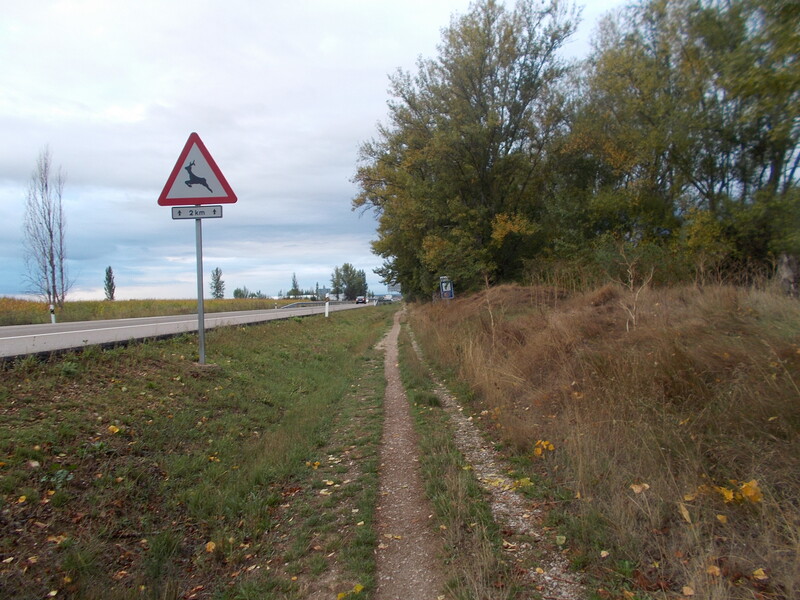 – Horrible stretch right next to the N120 road. Luckily we do not have to follow it for long, opting for an alternative route from Hospital de Orbigo.
– Horrible stretch right next to the N120 road. Luckily we do not have to follow it for long, opting for an alternative route from Hospital de Orbigo.
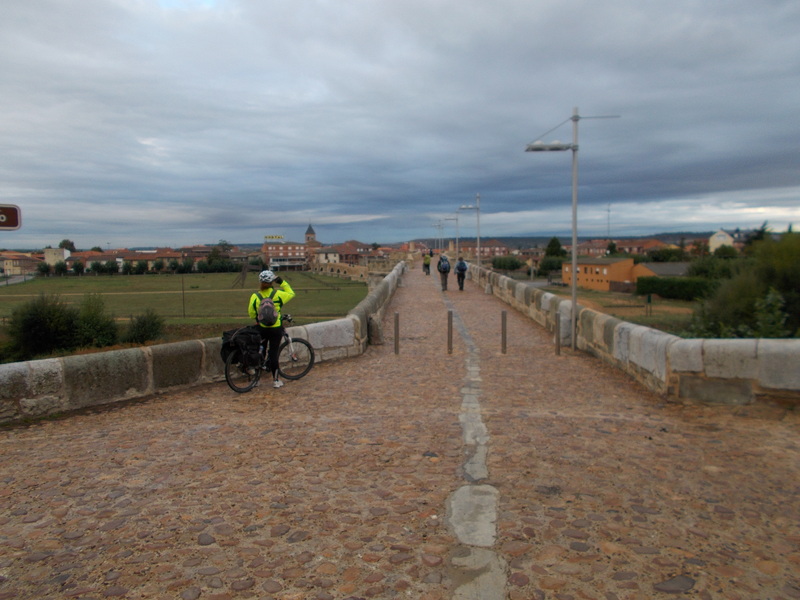 – Memorable cobblestones in Hospital de Orbigo.
– Memorable cobblestones in Hospital de Orbigo.
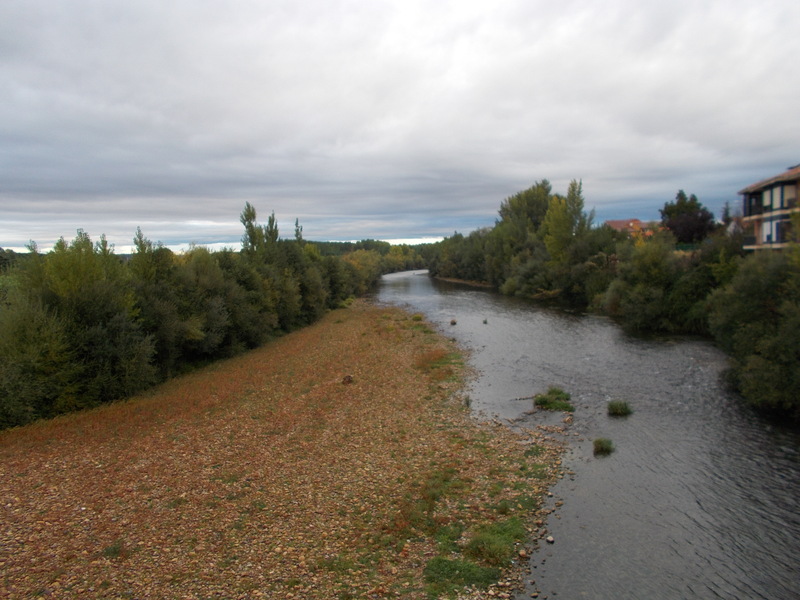 – River Orbigo, picture taken from the bridge. It is always great to see at least some water in this region of Spain.
– River Orbigo, picture taken from the bridge. It is always great to see at least some water in this region of Spain.
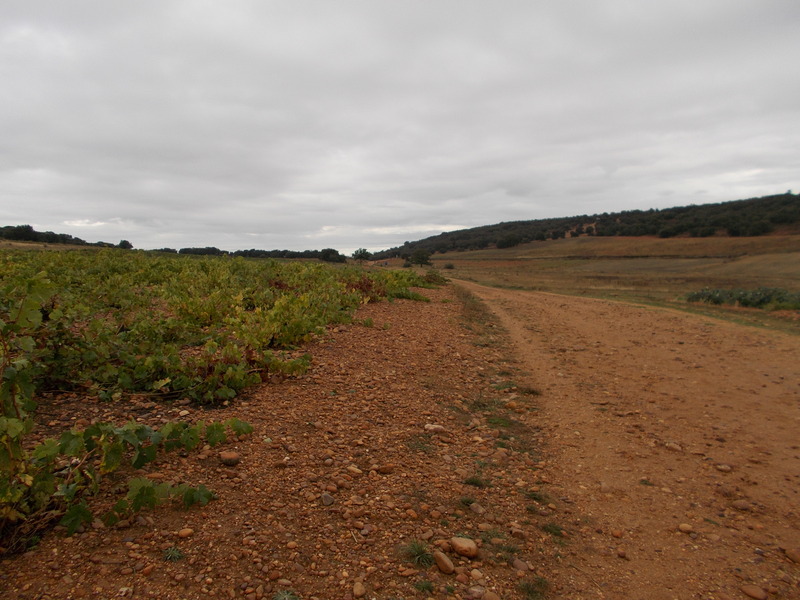 – A typical scenery for the nicer part of today’s stage.
– A typical scenery for the nicer part of today’s stage.
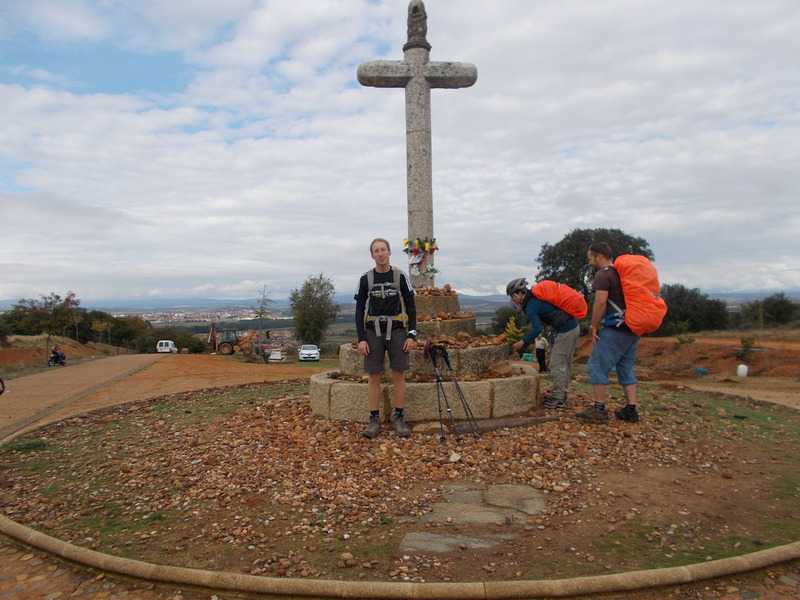 – The cross of St. Toribio, with the views of Astorga behind. Is it really younger me on the picture, or is it someone else? 🙂
– The cross of St. Toribio, with the views of Astorga behind. Is it really younger me on the picture, or is it someone else? 🙂
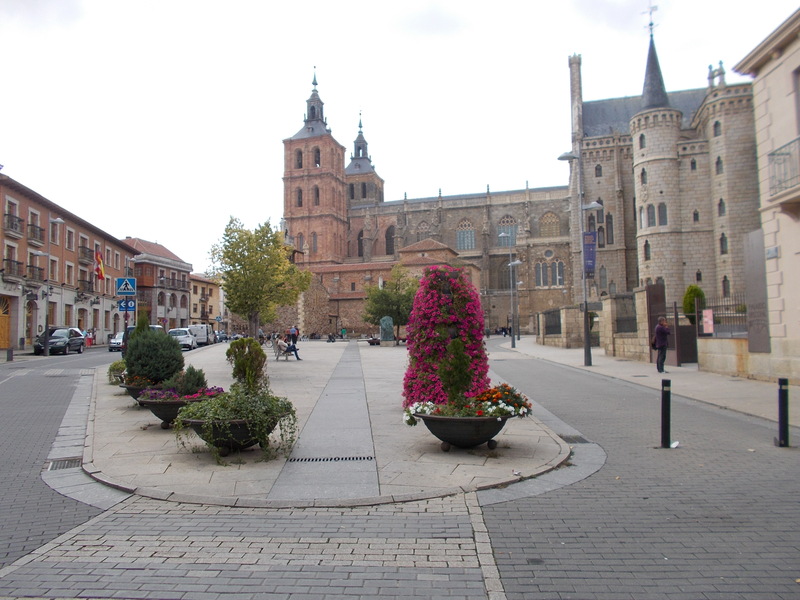 – The beautiful town of Astorga, great for an afternoon stroll.
– The beautiful town of Astorga, great for an afternoon stroll.
Few tips at the end
- The “Chocolate Town” of Camino Frances. Between 18th and 20th century, chocolate production (including quality chocolate) boomed in Astorga. While these times are gone, you can still find some reminders of the past in town, such as the Museum of Chocolate, or even a small chocolate factory (where you can have great hot chocolate), and a couple of shops specializing in selling chocolate products. By now you’ve already walked a lot, and surely deserve a small treat in Astorga :).
- The game of lights. The entire town center and especially the Gaudí palace is beautifully lit at night – perfect for photos, or just for experiencing a different atmosphere, after all those days sleeping in Meseta villages. Once you’re done with your dinner, instead of dropping to bed, go for a walk in the town center. I am sure you won’t be disappointed.
Next/Previous Stage
- Next stage: Camino Frances Stage no. 20, Astorga – Foncebadon.
- Previous stage: Camino Frances Stage no. 18, Leon – San Martin del Camino.
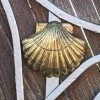


![Ultralight Packing List for Camino de Santiago [2025 Edition]](https://caminolovers.com/wp-content/uploads/2022/03/altra-shoes-640-x-480.jpg)
